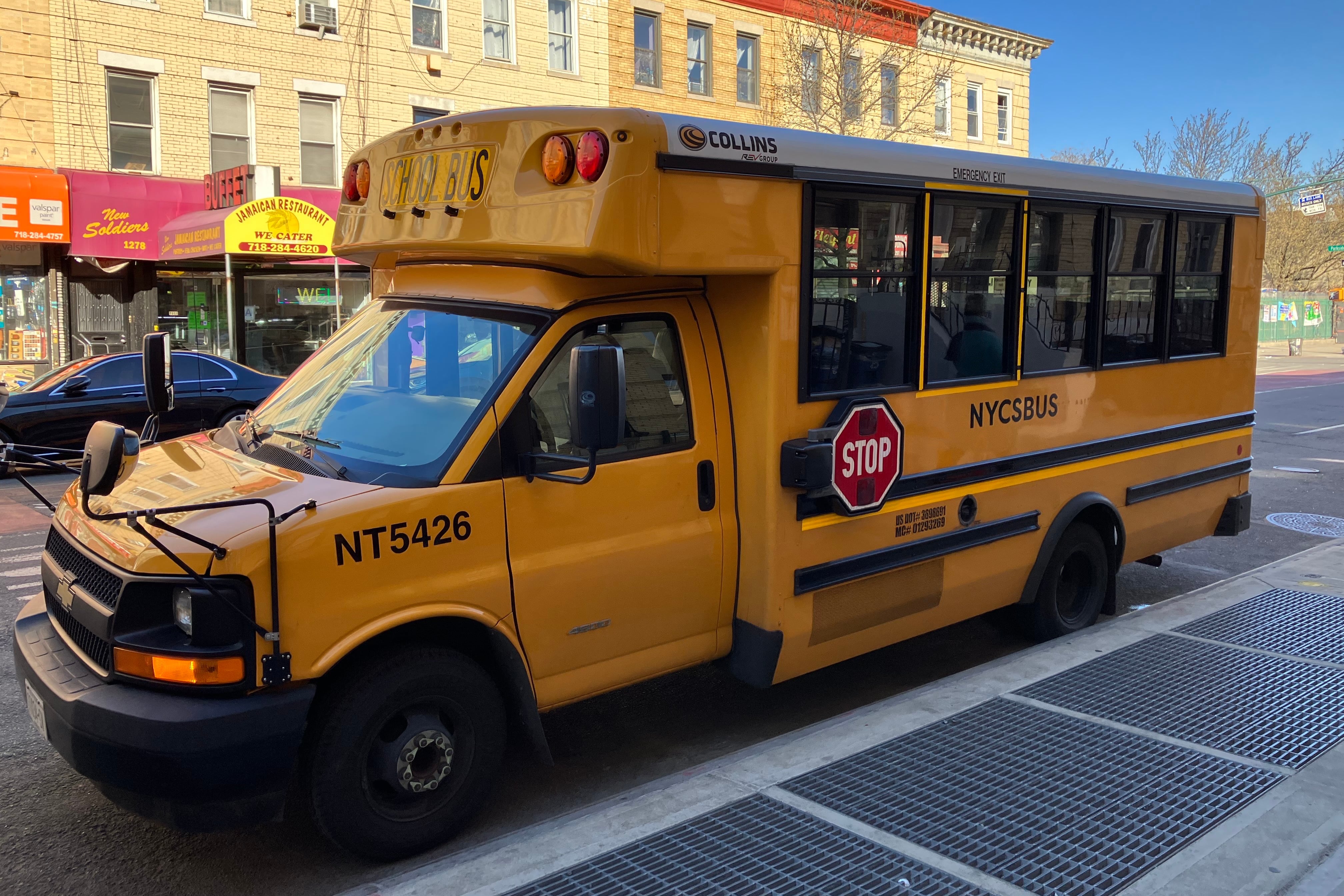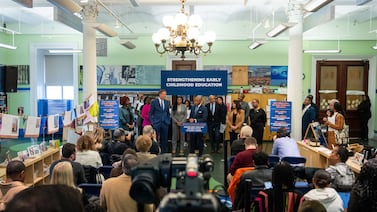Sign up for Chalkbeat New York’s free daily newsletter to keep up with NYC’s public schools.
With a new academic year about to start, New York City schools are bracing for a potential bus worker strike that could affect tens of thousands of students who rely on yellow buses to get to and from school.
The possible strike comes amid continued negotiations between the Amalgamated Transit Union — which represents about half of New York City’s public school bus drivers and attendants — and bus companies that contract with the city. A strike could impact roughly 80,000 students across 4,400 routes in the five boroughs, according to the city’s education department.
That’s more than half of the roughly 150,000 students who ride yellow buses across approximately 9,000 routes during the school year.
About 25,000 of the potentially affected riders are students with disabilities, officials said.
Concerns over the potential strike have been brewing for weeks, after the union’s collective bargaining agreement with many bus companies expired at the end of June. But Monday, just days ahead of the Sept. 7 start of school, the city’s education department released a more detailed set of guidelines about how families could navigate a possible strike.
Here’s what we know:
Which students could be affected?
A school bus worker strike would disproportionately affect students who tend to rely on yellow bus services — including the city’s youngest students and those with disabilities.
It’s not clear yet which routes would be impacted. The city’s education department initially said it would release a map of potentially affected routes sometime this week, but Friday, officials said no map would be posted.
Families who are affected will receive an automated call, email, and text message from the city once a strike is confirmed, as well as on the first day of interrupted service, according to officials.
Even under normal circumstances, the city’s vast school bus system often gets off to a rocky start, with scores of families experiencing long delays or no-show buses.
And even if a strike is averted, it’s possible that the effects of the last-minute negotiations could ripple into the start of the school year. One source close to the negotiations, who spoke on the condition of anonymity, said school bus companies usually pick routes this week, but that isn’t happening because of ongoing negotiations.
How long could a strike last?
In a press release Monday, schools Chancellor David Banks said the city is “pushing for a resolution before the start of the school year,” but it remains unclear whether the strike will occur and how long it could last.
In 2013, a prolonged school bus worker strike saw services disrupted for more than a month, impacting more than 100,000 students and significantly driving down attendance rates in programs for students with disabilities.
What services will the city offer if a strike occurs?
Families impacted by the strike will be eligible for prepaid MetroCards through their school, allowing parents and students to travel to and from school on public transportation, according to the city’s education department. Families will receive four trips per MetroCard on MTA buses and subways each day during the school week.
Some affected students — like those with disabilities who are entitled to transportation services, or who live in temporary housing — will also receive access to a free rideshare service, which will provide a car to take them and a caregiver to and from school each day.
Ride-share services have typically been difficult for parents to take advantage of since they require parents to accompany their children to and from school. The car service would also provide a ride for the caregiver to any location in the five boroughs after drop-off, and pick them up there in the afternoon before returning to the school — an option which could make it more feasible for some parents.
One public school teacher in Fort Greene, who spoke on the condition of anonymity, said they worried about whether their two kids would be able to use the service, even though both would be eligible. They attend school about an hour away in Bensonhurst, where they receive specialized programming for students with autism.
“The earliest they’re allowed to be in the building is 7:30 a.m.,” the teacher said. “There’s no way I’m going to get them dropped off at 7:30 a.m., and take the hour ride, and still be there in time for my 8:10 classes.”
Some eligible families can also be reimbursed for transportation costs to get to and from schools in taxis or personal vehicles.
The city’s education department has not provided detailed information on how parents can access these alternative transportation services, but vowed to share further details before the school year begins.
Impacted families cannot opt for virtual learning if a strike occurs, but students will be excused for up to two hours of lateness caused by it.
Why are school bus workers considering a strike?
Union officials have been tight-lipped about the key sticking points in negotiations, though they have generally pointed to bread-and-butter economic issues.
“There has been a school bus workers shortage for several years,” Tomas Fret, president of the Amalgamated Transit Union Local 1181, said in a statement earlier this month. “Drivers, attendants and shop employees simply cannot make ends meet.”
School building shutdowns in the wake of the pandemic prompted the city to furlough thousands of bus workers, and officials have since warned of driver shortages and challenges with recruitment.
A union spokesperson declined to comment on the status of negotiations or detail their demands.
How did the most recent school bus strike end?
The 2013 strike largely centered on job protections. Then-Mayor Michael Bloomberg was seeking new bus contracts to save money, and union officials wanted a guarantee that current workers could keep their jobs even if the companies they worked for did not win a new contract. (Bloomberg argued that the city was legally prohibited from making that promise.)
After a month, union officials called off the strike without winning job protections. The action was costly to bus workers, some of whom expressed frustration about the episode.
It remains to be seen how a strike this school year might play out in the court of public opinion. But some parent leaders who advocate on transportation issues have circulated a petition supporting the union’s demands for higher wages and detailing concerns about the city’s contingency plans.
Sara Catalinotto, the head of Parents to Improve School Transportation and a veteran transportation advocate, recalled that during the 2013 strike, “parent after parent testified their students had regressed and that they couldn’t get their kids to school under” similar transportation alternatives to what city officials are offering now: MetroCards and city-funded taxis.
“Those who remember it, the moment they heard the word strike, it’s a chilling feeling in your stomach,” she said.
Julian Shen-Berro is a reporter covering New York City. Contact him at jshen-berro@chalkbeat.org.






